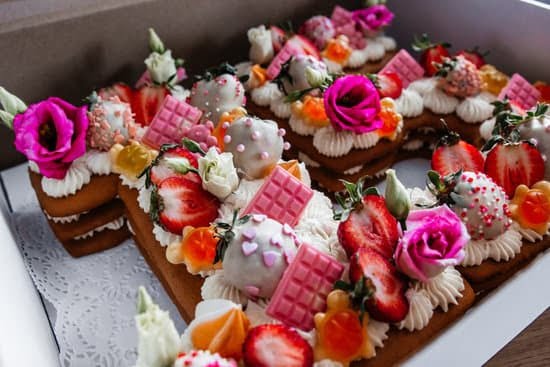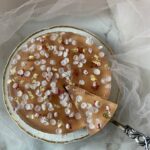How do you make chocolate decorations for cakes? Chocolate decorations add an elegant and professional touch to any cake, making it an eye-catching centerpiece for any occasion.
From simple curls to intricate roses and flowers, chocolate decorations can elevate the visual appeal of your cake. In this article, we will explore the art of creating stunning chocolate decorations for cakes, covering different types of chocolate, essential tools and supplies, tempering techniques, creating intricate designs with transfer sheets and stencils, troubleshooting common issues, and advanced techniques for mastering chocolate decorations.
Chocolate decorations are not only visually appealing but also add a delicious element to any cake. With the right techniques and tools, you can create beautiful and professional-looking chocolate decorations that will impress your family and friends. Whether you’re a beginner or a seasoned baker looking to enhance your cake decorating skills, this article will provide you with all the necessary information to create stunning chocolate decorations for your cakes.
In the following sections, we will delve into the different types of chocolate commonly used for decorations, essential tools and supplies needed, as well as step-by-step guides and tips for creating intricate designs such as roses and flowers. Additionally, we will cover troubleshooting common issues that may arise during the decoration process and explore advanced techniques to take your chocolate decoration skills to the next level.
Whether you’re looking to add a simple yet elegant touch or create elaborate designs on your cakes, mastering the art of chocolate decoration will elevate your baking game.
Types of Chocolate for Decorations
When it comes to making chocolate decorations for cakes, the type of chocolate you use plays a crucial role in the outcome. Dark, milk, and white chocolate each have their own unique properties that affect how they can be used for decorations.
Dark chocolate is often preferred for its rich flavor and deep color. It contains a higher percentage of cocoa solids, which makes it more stable and suitable for intricate designs and shapes when creating decorations.
On the other hand, milk chocolate has a sweeter taste and lower cocoa content, which can make it more challenging to work with for detailed decorations. White chocolate, despite not actually containing cocoa solids, adds a creamy and sweet flavor to decorations but requires careful handling due to its sensitivity to heat.
In addition to considering the type of chocolate to use, it’s important to pay attention to the quality of the chocolate. Using high-quality chocolate will result in better tasting and more visually appealing decorations.
When exploring different types of chocolate for cake decorations, keep in mind that each type may require slightly different techniques for melting and shaping. For example, dark chocolate may need longer melting time at lower temperatures compared to white or milk chocolate due to its higher cocoa content.
| Type of Chocolate | Properties |
|---|---|
| Dark Chocolate | Higher cocoa solids content; ideal for intricate designs; rich flavor |
| Milk Chocolate | Sweeter taste; lower cocoa content; challenging for detailed decorations |
| White Chocolate | Creamy flavor; requires careful handling due to heat sensitivity |
Tools and Supplies Needed
When it comes to creating stunning chocolate decorations for cakes, having the right tools and supplies is essential. Whether you are a beginner or an experienced baker, the right equipment can make all the difference in achieving professional-looking results. In this section, we will explore the various tools and supplies needed for making chocolate decorations, including silicone molds, piping bags, and melting techniques.
Silicone Molds
Silicone molds are essential for creating uniform and intricate chocolate decorations. These molds come in a variety of shapes and sizes, allowing you to create everything from simple geometric designs to elaborate floral shapes. When using silicone molds for chocolate decorations, it is important to properly prepare them with cocoa butter or tempered chocolate to ensure easy release of the finished decorations.
Piping Bags
Piping bags are indispensable for creating delicate designs and intricate details with melted chocolate. Look for flexible plastic or reusable nylon piping bags that can withstand the heat of melted chocolate. Additionally, having a variety of piping tips on hand will allow you to create different textures and patterns with your melted chocolate.
Melting Techniques
There are several methods for melting chocolate, including using a double boiler, microwave, or sous vide machine. Each method requires careful attention to prevent overheating and ensure that the chocolate retains its smooth texture and glossy finish. Regardless of the melting method you choose, it is important to use high-quality chocolate specifically designed for melting and tempering.
With these essential tools and supplies in your arsenal, you’ll be well-equipped to begin creating beautiful chocolate decorations for cakes. Mastering the art of using silicone molds, piping bags, and proper melting techniques is key to achieving professional results that will impress your friends and family at any special occasion.
Tempering Chocolate
The Process of Tempering
To temper chocolate, you will need to melt it gently over low heat until it reaches a specific temperature, which varies depending on the type of chocolate you are using. Once melted, the chocolate should be cooled down to a certain temperature by spreading it thinly on a marble surface or stirring constantly. After reaching the desired temperature, it must then be reheated slightly before it is ready to use for decorations.
Methods for Tempering Chocolate
There are several methods for tempering chocolate, including seeding, tabling, and using a tempering machine. Each method has its advantages and may be more suitable depending on the quantity of chocolate you need tempered and your level of experience with working with chocolate. Experiment with different methods to find which one works best for you and produces the results you desire for your cake decorations.
Tips for Successful Tempering
Successfully tempering chocolate requires precision and attention to detail. It’s important to use a reliable thermometer to monitor the temperature throughout the process and avoid any sudden temperature changes that could cause the chocolate to lose its temper.
Additionally, make sure to work in a cool environment free from any humidity, as moisture can affect the texture and appearance of tempered chocolate. With practice and patience, mastering the art of tempering will allow you to create stunning and professional-looking chocolate decorations for your cakes.
Creating Chocolate Shards and Curls
When it comes to decorating cakes with chocolate, creating shards and curls can add a sophisticated touch to your baked creations. But how do you make chocolate decorations for cakes in the form of shards and curls? The process is not as complex as it may seem, but it does require some skill and the right techniques.
To create chocolate shards and curls, you will need to start by melting the chocolate of your choice. Whether you opt for dark, milk, or white chocolate, it is important to use high-quality couverture chocolate for the best results.
Once melted, the chocolate should be spread thinly onto a baking sheet or marble surface using an offset spatula. It should then be allowed to partially set before being carefully scraped into curls or broken into irregular shards using a bench scraper or knife.
For a professional look, it is essential to temper the chocolate properly before spreading it out for shard or curl making. This process involves heating and cooling the chocolate to specific temperatures in order to achieve a glossy finish and good snap when set. By following the correct tempering techniques, you can ensure that your chocolate decorations have a smooth texture and appealing appearance.
| Chocolate Type | Tempering Temperature |
|---|---|
| Dark Chocolate | 88°F – 90°F (31°C – 32°C) |
| Milk Chocolate | 86°F – 88°F (30°C – 31°C) |
| White Chocolate | 82°F – 84°F (27°C – 29°C) |
By mastering the art of creating chocolate shards and curls, you can elevate the visual appeal of your cakes and desserts. With practice and attention to detail, these simple yet elegant decorations can become a signature element of your baking repertoire.
Making Chocolate Roses and Flowers
When it comes to creating stunning cake decorations, chocolate roses and flowers can truly elevate the look of any dessert. Whether you’re a professional pastry chef or just an enthusiastic home baker, learning how to make chocolate roses and flowers can add a touch of elegance and sophistication to your cakes. Here’s a step-by-step guide to help you master this beautiful art form.
Step 1: Choosing the Right Chocolate
When making chocolate decorations for cakes, it’s important to use high-quality chocolate that is suitable for melting and molding. Dark, milk, and white chocolate can all be used to create roses and flowers, each offering a unique flavor profile and color. Be sure to select a chocolate with at least 70% cocoa content for the best results.
Step 2: Melting and Tempering the Chocolate
Before you can start shaping your roses and flowers, you’ll need to melt the chocolate using the proper techniques. This typically involves using a double boiler or microwave to gently melt the chocolate until it reaches the desired consistency. Once melted, tempering the chocolate is crucial for achieving a glossy finish and ensuring that the decorations set properly.
Step 3: Shaping the Roses and Flowers
There are various methods for shaping chocolate into roses and flowers, including using silicone molds, piping bags, or simply hand-rolling petals. No matter which method you choose, it’s important to work quickly but carefully to create realistic-looking petals with smooth edges. Additionally, adding depth and dimension to the petals by layering different shades of chocolate can enhance the overall visual impact of the decorations.
Mastering the art of making chocolate roses and flowers takes practice, patience, and attention to detail. With these step-by-step guidelines and some creativity, you’ll soon be able to create stunning cake decorations that will impress all who see them.
Using Transfer Sheets and Stencils
When it comes to adding intricate designs to chocolate decorations, using transfer sheets and stencils can take your creations to the next level. These tools allow you to create professional-looking designs with ease, whether you’re a beginner or an experienced baker. Here are some tips and techniques for using transfer sheets and stencils to enhance your chocolate decorations.
First, let’s explore using transfer sheets to add beautiful patterns and designs to your chocolate. Transfer sheets are thin, flexible sheets with printed cocoa butter designs that can be transferred onto melted chocolate. To use them, simply pour tempered chocolate onto the sheet, spread it evenly, and then chill it until set. Once the chocolate is firm, you can peel away the transfer sheet to reveal the stunning design left behind.
Additionally, stencils can be used to create intricate designs on chocolate decorations. Stencils are available in a variety of patterns and shapes, allowing you to customize your decorations to fit any theme or occasion.
To use a stencil, place it over the surface of your cake or dessert, then carefully dust cocoa powder or powdered sugar over the stencil using a fine-mesh sieve. When you lift the stencil away, you’ll be left with a beautifully detailed design on your chocolate decoration.
Incorporating transfer sheets and stencils into your chocolate decoration arsenal opens up endless creative possibilities for decorating cakes and desserts. Whether you’re adding a delicate lace pattern or a bold geometric design, these tools can help you achieve professional-looking results with ease. Mastering the use of transfer sheets and stencils will elevate your chocolate decorations and impress any guest or customer who sees your stunning creations.
Troubleshooting Common Issues
Have you ever experienced cracks in your chocolate decorations or noticed a white, powdery appearance on the surface? These common issues can be frustrating, but with the right techniques, you can easily fix them and achieve flawless chocolate decorations for your cakes. In this section, we’ll discuss how to troubleshoot these problems and ensure that your chocolate decorations always look professional and impressive.
One of the most common issues when working with chocolate is the formation of cracks. This can occur when the chocolate cools too quickly or is not properly tempered. To prevent and fix cracks in your chocolate decorations, it’s important to pay close attention to the tempering process.
Properly tempered chocolate will have a smooth and glossy finish, reducing the likelihood of cracks forming. If you do encounter cracks, you can gently reheat the chocolate and allow it to cool again, ensuring a more even temperature distribution.
Another issue that many bakers face when working with chocolate decorations is blooming, which results in a dull or whitish film on the surface of the chocolate. Blooming occurs when the cocoa butter in the chocolate crystallizes, often due to improper storage or exposure to temperature changes.
To fix blooming, you can carefully re-melt the affected areas of the decoration and allow them to cool slowly at a consistent temperature. Additionally, proper storage in a cool, dry place can help prevent blooming from occurring in the future.
By understanding how to troubleshoot common issues such as cracks and blooming, you’ll be better equipped to create stunning and professional-looking chocolate decorations for your cakes. With attention to detail and the right techniques for fixing these problems, you can ensure that your chocolate decorations always make a beautiful statement on your baked creations.
Beyond the Basics
In conclusion, mastering the art of chocolate decorations for cakes can take your baking to the next level. Whether you choose dark, milk, or white chocolate, using the right tools and techniques is essential for achieving professional-looking results. From creating chocolate shards and curls to making intricate roses and flowers, there are endless possibilities for elevating your cake decorating skills with chocolate.
Once you have mastered the basics of chocolate decorations, it’s time to explore advanced techniques. Using transfer sheets and stencils can add intricate designs and patterns to your chocolate decorations, making them truly stand out. Additionally, troubleshooting common issues such as cracks and blooming will ensure that your chocolate decorations always look their best.
As you continue to hone your skills in creating stunning chocolate decorations for cakes, don’t be afraid to experiment and push the boundaries of traditional techniques. With practice and patience, you’ll be able to create show-stopping cakes adorned with beautiful and delicious chocolate decorations that will impress any crowd. So go ahead, get creative, and let your imagination run wild with chocolate.
Frequently Asked Questions
How to Make Easy Chocolate Decorations for Cakes?
Making easy chocolate decorations for cakes can be done by melting chocolate, pouring it into a piping bag, and then creating various shapes and designs on parchment paper. Once the chocolate has set, carefully peel off the decorations and place them on the cake.
What Chocolate Is Best for Cake Decorations?
The best chocolate for cake decorations is usually couverture or high-quality dark chocolate with at least 60% cocoa content. These types of chocolate have a good consistency for making decorations and provide a rich flavor that complements the cake well.
How Far in Advance Can I Make Chocolate Decorations?
Chocolate decorations can be made in advance and stored in an airtight container at room temperature for up to two weeks. It’s important to keep them away from direct sunlight and moisture to prevent melting or discoloration.
For larger, more intricate decorations, it’s best to make them closer to when they will be used on the cake to ensure they stay intact.

Welcome to our cake decorating blog! My name is Destiny Flores, and I am the proud owner of a cake decorating business named Cake Karma. Our mission is to provide delicious, beautiful cakes for all occasions. We specialize in creating custom cakes that are tailored specifically to each customer’s individual needs and tastes.





